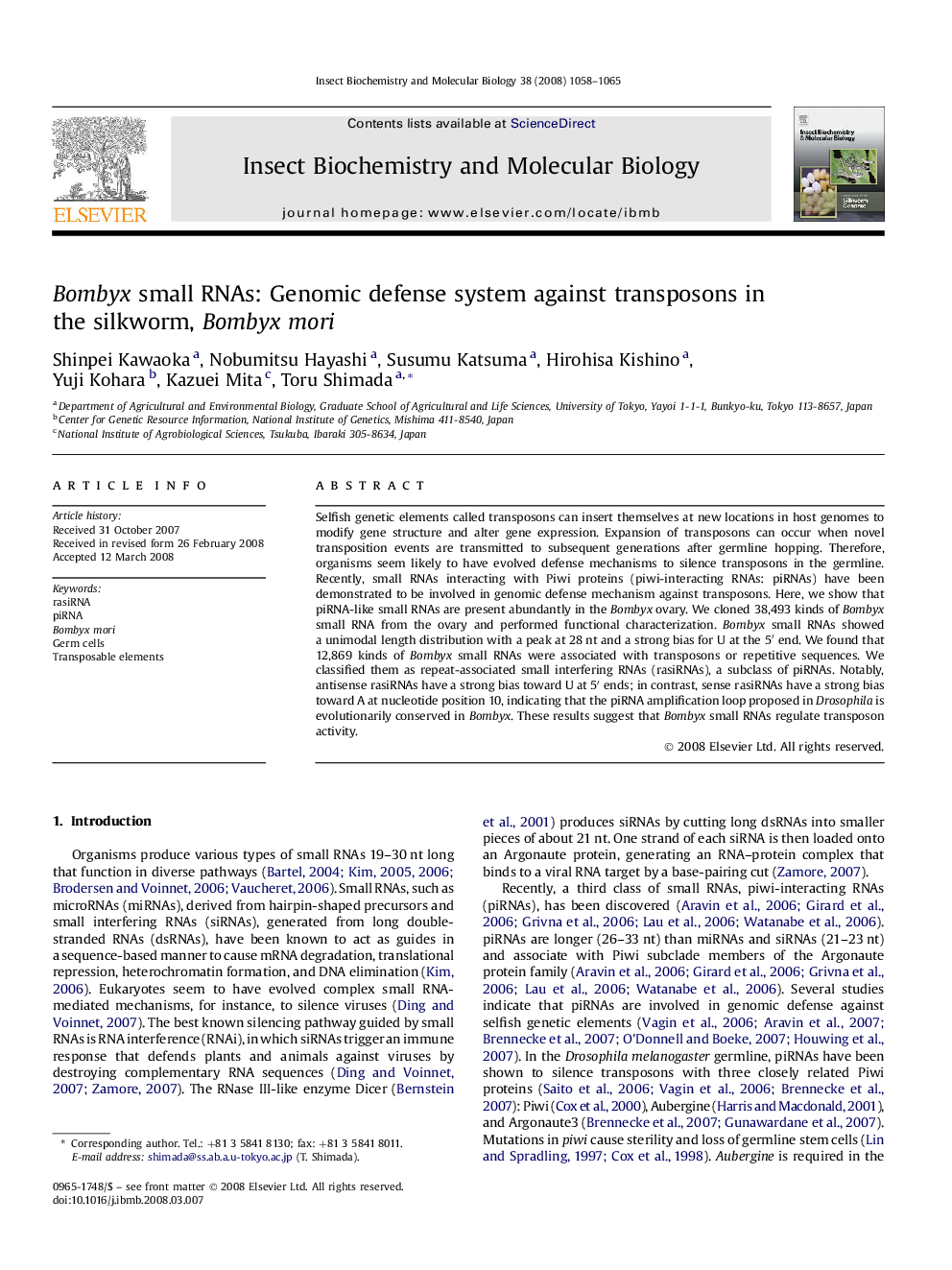| Article ID | Journal | Published Year | Pages | File Type |
|---|---|---|---|---|
| 1982733 | Insect Biochemistry and Molecular Biology | 2008 | 8 Pages |
Selfish genetic elements called transposons can insert themselves at new locations in host genomes to modify gene structure and alter gene expression. Expansion of transposons can occur when novel transposition events are transmitted to subsequent generations after germline hopping. Therefore, organisms seem likely to have evolved defense mechanisms to silence transposons in the germline. Recently, small RNAs interacting with Piwi proteins (piwi-interacting RNAs: piRNAs) have been demonstrated to be involved in genomic defense mechanism against transposons. Here, we show that piRNA-like small RNAs are present abundantly in the Bombyx ovary. We cloned 38,493 kinds of Bombyx small RNA from the ovary and performed functional characterization. Bombyx small RNAs showed a unimodal length distribution with a peak at 28 nt and a strong bias for U at the 5′ end. We found that 12,869 kinds of Bombyx small RNAs were associated with transposons or repetitive sequences. We classified them as repeat-associated small interfering RNAs (rasiRNAs), a subclass of piRNAs. Notably, antisense rasiRNAs have a strong bias toward U at 5′ ends; in contrast, sense rasiRNAs have a strong bias toward A at nucleotide position 10, indicating that the piRNA amplification loop proposed in Drosophila is evolutionarily conserved in Bombyx. These results suggest that Bombyx small RNAs regulate transposon activity.
